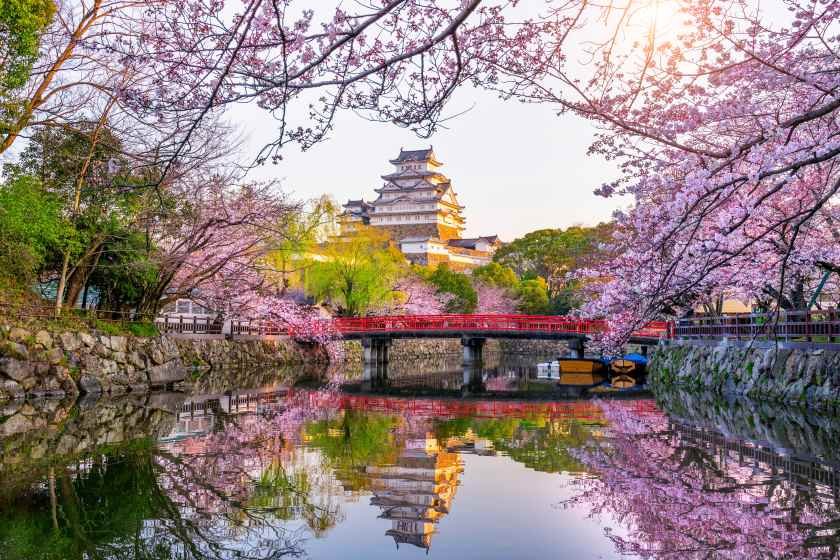Asia Travel Pulse
Singapore Now Leads India, Japan, South Korea And Other Asian Nations In Global Passport Rankings Of 2025

Wednesday, July 23, 2025
In 2025, Asian nations have emerged as leaders in global passport rankings, surpassing traditional Western powers. According to the Henley Passport Index, Singapore holds the top position, offering visa-free access to 193 destinations. Japan and South Korea follow closely, each providing access to 190 destinations. This shift underscores Asia’s growing influence in global mobility. The strength of these passports reflects the expanding diplomatic and economic relationships of these nations, which have paved the way for greater travel freedom for their citizens.
Singapore: A Beacon of Global Mobility
Singapore’s passport is recognized as the world’s most powerful, granting visa-free or visa-on-arrival access to 193 countries and territories. This achievement reflects Singapore’s robust diplomatic relations and strategic international agreements. The nation’s political stability, strong economic standing, and effective governance have played a crucial role in its ascent to the top of the global passport rankings. Singapore’s role as a key financial hub in Asia enhances its global mobility, offering business, leisure, and educational opportunities worldwide. Its partnerships with countries across the globe, especially in the Asia-Pacific region, make it a central player in international diplomacy and trade.
As a travel destination, Singapore offers a unique blend of modern cityscape and rich cultural heritage. Visitors can explore iconic landmarks like the Marina Bay Sands, Gardens by the Bay, and the bustling streets of Chinatown, while also enjoying its diverse food scene. The country’s efficient public transportation system makes it easy to explore, ensuring that tourists have a seamless experience when visiting.
Japan: A Global Mobility Leader
Japan ranks second in the global passport power index, with access to 190 destinations. Japan’s passport strength is attributed to its excellent diplomatic relations with many countries, its commitment to international cooperation, and its stability as a world leader in technology and innovation. Japan’s visa policy reflects its strategic position in East Asia, facilitating business and tourism exchanges, further solidifying its role in global mobility.
Japan is a destination rich in both traditional and modern attractions. Tokyo, the vibrant capital, offers futuristic architecture, world-class shopping, and cutting-edge technology. Kyoto, on the other hand, presents a more serene experience with its beautiful temples, traditional tea houses, and the scenic beauty of cherry blossoms in the spring. Japan’s extensive railway network makes it easy to explore the country’s diverse regions, from the snowy mountains of Hokkaido to the tropical islands of Okinawa.
South Korea: Rising Power in Global Travel
South Korea shares second place in the rankings with Japan, offering access to 190 destinations. The country’s passport strength is supported by its strategic alliances, particularly with key Asian and Western nations. South Korea’s diplomatic and trade relationships with countries around the world, combined with its growing global influence, have enhanced the mobility of its citizens.
South Korea offers a dynamic travel experience, where visitors can explore the ultramodern capital, Seoul, and its rich cultural heritage. Tourists can experience traditional palaces like Gyeongbokgung, sample street food in bustling markets, or shop in high-tech malls in Gangnam. Beyond Seoul, South Korea boasts beautiful natural landscapes, such as Jeju Island, known for its volcanic landscapes and pristine beaches, making it a perfect destination for nature lovers and adventurers alike.
Hong Kong: A Regional Powerhouse
Hong Kong’s passport ranks among the top globally, providing holders with visa-free access to numerous countries. Despite the geopolitical challenges, Hong Kong maintains strong international ties, reflecting its historical role as a global financial center. The city’s trade agreements with countries worldwide enhance its passport power, supporting free movement for its citizens.
As a destination, Hong Kong is a bustling metropolis offering a blend of East and West. Visitors can explore the towering skyscrapers of Central, enjoy the scenic Victoria Peak, and shop in the vibrant markets of Mong Kok. For a more relaxed experience, tourists can take a ferry ride across Victoria Harbour or explore the serene hiking trails around the city’s surrounding islands. Hong Kong’s culinary scene is another highlight, with world-renowned dim sum, street food, and Michelin-starred restaurants attracting food lovers from around the world.
Malaysia: Growing Influence in Global Mobility
Malaysia’s passport is ranked among the top 15 globally, with access to 183 destinations. This strong passport power reflects Malaysia’s expanding role in regional and global trade, particularly in ASEAN and beyond. As a member of the Commonwealth and with established diplomatic ties with countries across Asia and Europe, Malaysia’s passport offers excellent travel freedom for its citizens.
Malaysia is also an attractive travel destination, known for its diverse cultural heritage, lush landscapes, and vibrant cities. Kuala Lumpur, the capital, is a city of contrasts, where modern skyscrapers like the Petronas Towers coexist with colonial architecture and bustling markets. Beyond the cities, Malaysia offers natural beauty, from the tropical rainforests of Borneo to the idyllic beaches of Langkawi and the Perhentian Islands. Malaysia’s rich mix of Malay, Chinese, Indian, and indigenous cultures is reflected in its festivals, cuisine, and daily life, making it a unique destination for travelers.
United Arab Emirates: A Strong Contender in the Passport Rankings
The UAE has seen a rise in passport strength, consistently ranking among the top 20 globally. UAE citizens enjoy extensive travel freedoms, facilitated by the country’s economic power and strategic geopolitical location. With a focus on expanding diplomatic and trade relations across the globe, the UAE has strengthened its position in global mobility.
The UAE is home to world-class cities like Dubai and Abu Dhabi, which offer tourists a mix of luxury, entertainment, and culture. Visitors flock to Dubai for its iconic skyscrapers, such as the Burj Khalifa, and the bustling Dubai Mall. Abu Dhabi, known for its rich cultural offerings, boasts attractions like the Sheikh Zayed Grand Mosque and the Louvre Abu Dhabi. The UAE also offers stunning desert landscapes, where visitors can experience traditional Bedouin life and take part in thrilling desert safaris.
Conclusion
The global passport index 2025 has shown the increasing power of Asia, with Singapore, Japan, South Korea and Hong Kong, leading the way. Not only are these countries ranked high in terms of global mobility, they are some of the most fascinating cites for travelers looking for an amalgamation of modernity and tradition. As Asia gains power on the global stage, its passports are testament not just to its political and diplomatic prowess. Moreover, these countries are also becoming favorites of tourists and have much to offer to all types of travelers. With their powerful passports and dynamic tourist attractions, these countries will continue to be major players in global travel for years to come.
Asia Travel Pulse
China Airlines Sets A New Benchmark In U.S.–Asia Travel By Connecting Taiwan And Phoenix Through Direct Long-Haul Flights Operated By The Airbus A350-900
Monday, July 28, 2025
China Airlines sets a new benchmark in U.S.–Asia travel by becoming the first Asian carrier to launch nonstop flights between Taiwan and Phoenix, Arizona, a move that directly enhances connectivity, business links, and tourism between East Asia and the southwestern United States, while showcasing the long-range capabilities and premium passenger experience of the Airbus A350-900.
China Airlines is set to become the first Asian carrier to introduce direct passenger service to Phoenix, Arizona, expanding its transpacific footprint with a new destination that has long been underserved by international airlines. This bold move will bring Taiwan and the southwestern United States closer than ever, with the airline deploying its state-of-the-art Airbus A350-900 to operate the route.
The new nonstop service represents a strategic milestone in China Airlines’ North American growth plan. With an increasing number of Taiwanese travelers exploring inland U.S. destinations and more Americans seeking direct access to Asia from the Southwest, the route addresses rising two-way travel demand. The decision to use the A350-900 is also no coincidence—this aircraft offers a long-range capability combined with fuel efficiency and passenger comfort, making it ideal for the Taiwan–Phoenix sector.
This new route is designed to integrate seamlessly with China Airlines’ existing North American network, which already includes nonstop service to New York, Los Angeles, San Francisco, Seattle, Ontario (California), and Vancouver. The Phoenix launch not only fills a geographic gap in the airline’s network, but also opens up new opportunities for travelers connecting beyond Phoenix to other major cities across the U.S.
One of the key advantages of this route lies in the strengthened interline agreement with a U.S.-based carrier that maintains a major hub at Phoenix Sky Harbor International Airport. Thanks to this partnership, travelers arriving in Phoenix will be able to continue on to dozens of onward destinations through a simplified itinerary. Instead of rechecking baggage or transferring terminals, passengers can board their connecting flights directly from the same arrival terminal. This convenience is expected to appeal to international travelers seeking smoother transits and more efficient connections to cities in the American Southwest, Midwest, and beyond.
For passengers flying out of Taiwan, Phoenix becomes a new and accessible entry point into the heart of the United States. The route will also support business travel between emerging tech, manufacturing, and logistics sectors in both regions. The metropolitan Phoenix area has seen strong growth in industries such as semiconductors, aerospace, and renewable energy—sectors that also have strong links with Taiwan’s economy.
China Airlines’ decision to serve Phoenix reflects a broader trend of airlines diversifying their U.S. gateways beyond traditional coastal cities. As competition intensifies at major hubs like Los Angeles and San Francisco, secondary cities with strong business and leisure demand are becoming increasingly attractive. Phoenix, one of the fastest-growing cities in the U.S., fits this profile perfectly. With over 40 million annual passengers and a highly efficient airport layout, Sky Harbor provides an ideal platform for international carriers looking to enter new markets.
Beyond Phoenix, China Airlines is also doubling down on its presence in New York. The carrier plans to increase flight frequencies to JFK International Airport to accommodate higher passenger volumes. Additionally, it has announced its relocation to JFK’s newly constructed Terminal One, which is scheduled to open next year. The terminal promises upgraded amenities, faster passenger processing, and improved connectivity, which will elevate the carrier’s premium offering for eastbound travelers.
The Airbus A350-900, which will serve the Phoenix route, is central to China Airlines’ strategy of modernizing its fleet for long-haul travel. The aircraft features advanced aerodynamics, quieter engines, and next-generation cabin design. Passengers can expect a quieter, smoother ride with improved cabin pressure, mood lighting, and enhanced air quality. The plane’s layout also includes updated seating in all classes, including lie-flat business class seats, upgraded in-flight entertainment, and expanded storage space. The aircraft’s lower emissions and fuel consumption align with the airline’s push toward more sustainable aviation practices.
This new development reinforces China Airlines’ commitment to building stronger bridges between Taiwan and North America. As global travel recovers and demand for direct connectivity continues to rise, the airline is positioning itself to be a leader in long-haul transpacific service. By tapping into untapped markets like Phoenix and enhancing service at established hubs like New York, the carrier is creating new pathways for travelers on both sides of the Pacific.
The addition of Phoenix to the airline’s route map also sends a signal to the global aviation industry that regional U.S. cities are gaining traction as international gateways. These markets offer unique advantages, such as less congestion, lower operating costs, and faster turnaround times. For passengers, they offer a more personalized travel experience and often shorter total travel times compared to traditional connection points.
With the launch of this route, China Airlines is expected to attract a new wave of travelers looking for convenient, efficient, and comfortable transpacific options. Whether it’s business professionals heading to Arizona’s fast-growing corporate sector, tourists exploring the American Southwest, or families visiting relatives across borders, the new Phoenix service opens up countless travel possibilities.
China Airlines sets a new standard in U.S.–Asia connectivity by launching the first nonstop Taiwan–Phoenix route using the Airbus A350-900, enhancing travel, trade, and tourism between the two regions.
As the first Asian airline to serve Phoenix with direct flights, China Airlines not only strengthens its own global presence but also enhances Taiwan’s connectivity with the world. The route is expected to launch in the coming months, with booking options becoming available soon across all distribution channels.
Asia Travel Pulse
The Witcher In Concert To Make Asian Debut In Singapore: Details Inside

Fans of dark fantasy and epic soundtracks, mark your calendars! The Witcher In Concert is set to make its highly anticipated Asia debut in Singapore with two exclusive performances at the Sands Theatre, Marina Bay Sands, on November 29 and 30, 2025. The concert marks the 10th anniversary of The Witcher 3: Wild Hunt, the award-winning action role-playing game that has captivated over 75 million players worldwide. Following a successful tour through North America and Europe, the live orchestral production now arrives in Asia, with Singapore as its first stop.
Also, bookmark our guide to the most stunning locations in Singapore for an IG-forward exploration of the city.
The Witcher In Concert comes to Singapore: What to expect
The Witcher in Concert is coming to Asia! First stop: Singapore! 🎻
For the first time in Asia, the iconic music of The Witcher 3: Wild Hunt will be performed live, and it’s all happening in Singapore still this year!
The concerts will take place at the Lyric Theatre on… pic.twitter.com/rGuOW550g4
— The Witcher (@thewitcher) July 23, 2025
Presented by Base Entertainment Asia in collaboration with CD Projekt Red, Gea Live and RoadCo Entertainment, the event brings the music and story of The Witcher to life. Tracks are arranged by The Witcher 3 co-composer Marcin Przybyłowicz and performed by a live ensemble orchestra. Joining them on stage is Polish folk metal band Percival Schuttenbach, whose musical contributions helped shape the game’s distinctive score.
The concert follows Geralt of Rivia’s quest to find his adopted daughter Ciri, offering fans an atmospheric and emotionally charged journey through the world of The Continent. The Witcher in Concert performance in Singapore runs for two hours, including a 20-minute intermission.
- Where: Sands Theatre, Marina Bay Sands, 10 Bayfront Avenue
- When: November 29 at 2 pm and 7:30 pm; November 30 at 6:30 pm
- Admission: From SGD 92 (USD 71)
- Early bird offers are available to Development Bank of Singapore (DBS) and Post Office Savings Bank (POSB) Cardmembers and Singtel subscribers from July 23 to August 31, 2025. Tickets are available via the official show, Marina Bay Sands, Sistic, and Klook.
(Feature image credit: The Witcher/Facebook)
Related | Music Concerts And Festivals In Singapore That Should Be On Your Radar In 2025
Note:
The information in this article is accurate as of the date of publication.
Written By
Asia Travel Pulse
Japan now Issues Heightened Travel Advisory for Thailand-Cambodia Border Amid Military Tensions

Sunday, July 27, 2025
The Ministry of Foreign Affairs of Japan, in the light of the recent military confrontations between the Kingdom of Thailand and the Kingdom of Cambodia, raises the travel warning (level 2) previously issued for the Thailand-Cambodia border to level 3, advising Japanese nationals not to travel to the area. The advisory extends to any area within 50 kilometers of the Thai border, or within 30 kilometers of the Cambodian border.
The surge in violence, which began on Thursday, has left over 30 people dead and more than 110,000 forced to flee and as of now, there have been no deaths of Japanese citizens. Japan has warned its citizen about travel to the region and remains in close contact with the situation.
Details of the Ongoing Conflict
The fighting broke out as a result of a territorial dispute between Thailand and Cambodia over the disputed border near the Ta Muen Thom temple. The disagreement has resulted in heavy fighting that has involved artillery, landmines and airstrikes. Each side accuses the other of crossing territorial lines, and the violence has led to heavy casualties for both sides. There have been growing international calls for a ceasefire, but the fighting rages on despite the desperate appeals.
In addition to concerns about citizens and foreign nationals living and being in the affected areas on both countries, considerations have also been abroad for foreigners visiting in the battlefield regions, such as tourists and business travelers. Thailand-Cambodia border crossing is an outlet for tourists in Southeast Asia to visit the historical and cultural options available in both countries. The conflict has not only upended daily life but also the region’s tourism industry, with possible ripple effects for travel in Southeast Asia in the future.
Japan’s Travel Advisory and Recommendations
The latest fighting prompted Japan’s Foreign Ministry to issue a Level 3 travel advisory for the vicinity of the Thailand-Cambodia border. The warning urges Japanese to cancel or postpone travel to the region, and if currently in the affected areas to exercise extra caution.
There are roughly 450 Japanese people living in the disaster areas, the ministry added. The Japanese embassy has been helping its citizens with possible support, and those in need of help are requested to contact the embassy. The embassy also urges Japanese citizens to stay in contact with their embassies to keep abreast of the situation and to receive assistance quickly in case of need.
Based on the writing, the Ministry still recommend its people to avoid border area until something changes. They also advise that Japanese citizens get the latest information from local news and to comply with instructions provided by the local authorities, and not to make any unnecessary trips.
Tourism Impact and Border Closures
The continuing war has serious implications for tourism in the area. The border between Thailand and Cambodia is a major gateway for tourists who come to see ancient monuments, such as the Unesco World Heritage-listed Angkor Wat in Cambodia and the cultural sites in the Thai provinces bordering the northeast.
Closing of vital border points, including common transit points for international passengers, has also been temporarily halted due to the current military clashes. This has disrupted the tourist flow between the two countries, and resulted in a major disruption of cross-border travel. Tour operators and travelers have been urged to verify border crossings before booking.
Both countries are popular to tourists – and millions are attracted there every year to take in the rich fare of their exotic cultures and picturesque regions. Tourism flow in the region is likely to be disrupted as the war persists. Each story is harrowing, yet real. It is a must read for travelers who had plans to visit either Thailand or Cambodia, especially along the border or the vicinity, to temporarily postpone their plans until all is settled.
In addition, travel-related disruptions can impact the hospitality sector, such as hotels, restaurants and transport services, especially in border areas. The Thai and Cambodian tourist industries are cooperating with local officials to ensure tourists can still visit other parts of each country safely.
Global Response and Attempts to Control the Epidemic
The escalating conflict has drawn concern from the international community, led by the U.N. and the Association of Southeast Asian Nations (ASEAN). ASEAN demands ceasefire talks and asks both Thailand and Cambodia to reduce tensions. The US has also reiterated support for diplomatic and peaceful resolutions to the dispute.
For visitors, these diplomatic endeavors might just pay off in a more stable region. If ASEAN can help broker cease fire or resolution then may be travellers can return again as safe to travel. Tourists are advised to keep an eye on the news and government statements if they are travelling in the region and stay updated on any changes in travel recommendations and border situations.
What the Ongoing Clashes Mean for Tourists
While the travel advice only applies to Japanese, it is also part of the wider fallout from the hostilities that are hitting the entire Southeast Asian tourism sector. Foreign visitors who might have hoped to add the site to their travel itineraries, particularly tourists from overseas who have been drawn to Cambodia or Thailand’s northeastern provinces for cultural experiences, have been rethinking their plans due to the conflict.
Beyond the border closures, the violence has halted transport services such as buses, trains and flights, especially in the affected regions. International airlines flying in and out of the area have had to modify their timetables to meet fluctuations in demand and travelers should check for any cancellations or delays before leaving.
Conclusion
Japan’s Foreign Ministry says escalating violence at the border between Thailand and Cambodia has forced it to issue a Level 3 travel warning to its citizens, advising them not to travel to the disputed area. As a result of the conflict, the tourism flow between Thailand and Cambodia has been crippled, with many locals dependent on the travel and entertainment industries being forced to give up on their lives.
Travellers intending to be in the area are encouraged to stay informed of the situation and make their travel plans accordingly. The tourism sectors of Thailand and Cambodia are likely to be affected by the conflict in the short term, but international organizations and diplomatic discussions could restore stability to the region. As circumstances evolve, travelers should visit official government sources for the most current information on travel advisories and the statuses of their border crossings.
(Source: Japan Tourism.)
-

 Brand Stories7 days ago
Brand Stories7 days agoBloom Hotels: A Modern Vision of Hospitality Redefining Travel
-

 Brand Stories2 days ago
Brand Stories2 days agoCheQin.ai sets a new standard for hotel booking with its AI capabilities: empowering travellers to bargain, choose the best, and book with clarity.
-

 Destinations & Things To Do1 week ago
Destinations & Things To Do1 week agoUntouched Destinations: Stunning Hidden Gems You Must Visit
-

 AI in Travel1 week ago
AI in Travel1 week agoAI Travel Revolution: Must-Have Guide to the Best Experience
-

 Brand Stories3 weeks ago
Brand Stories3 weeks agoVoice AI Startup ElevenLabs Plans to Add Hubs Around the World
-

 Brand Stories2 weeks ago
Brand Stories2 weeks agoHow Elon Musk’s rogue Grok chatbot became a cautionary AI tale
-

 Destinations & Things To Do2 days ago
Destinations & Things To Do2 days agoThis Hidden Beach in India Glows at Night-But Only in One Secret Season
-

 Asia Travel Pulse3 weeks ago
Asia Travel Pulse3 weeks agoLooking For Adventure In Asia? Here Are 7 Epic Destinations You Need To Experience At Least Once – Zee News
-

 AI in Travel3 weeks ago
AI in Travel3 weeks ago‘Will AI take my job?’ A trip to a Beijing fortune-telling bar to see what lies ahead | China
-

 Brand Stories3 weeks ago
Brand Stories3 weeks agoChatGPT — the last of the great romantics













You must be logged in to post a comment Login